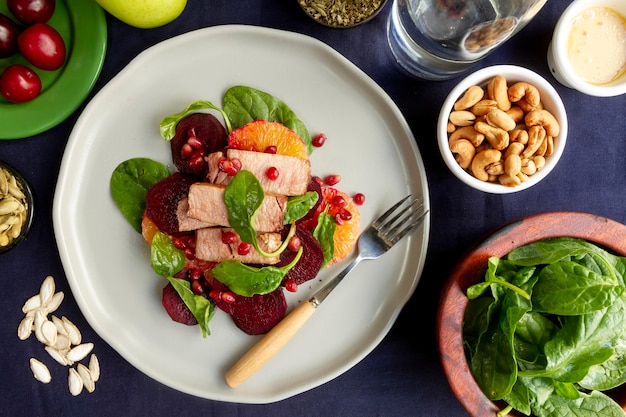50 Proven Ways to Supercharge Your Metabolism with Cycling: Weekly Plans, Challenges & Safety Tips
Cycling isn’t just a fun way to explore your surroundings—it’s a powerful tool for boosting your metabolism and enhancing overall health. Whether you're a beginner or a seasoned rider, integrating strategic cycling routines can help you burn calories more efficiently, build lean muscle, and improve metabolic function. In this comprehensive guide, we’ll explore 50 science-backed ways to rev up your metabolism through cycling, complete with weekly targets, structured programs, safety reminders, and motivational challenges.
Why Cycling Boosts Metabolism
Cycling is a cardiovascular powerhouse that elevates heart rate, increases oxygen consumption, and activates large muscle groups—especially in the legs. This leads to a higher caloric burn both during and after exercise, thanks to the afterburn effect (EPOC—Excess Post-exercise Oxygen Consumption). Regular cycling also improves insulin sensitivity and mitochondrial efficiency, both of which support a faster resting metabolic rate.

50 Ways to Boost Metabolism with Cycling
- Ride for at least 30 minutes daily to maintain metabolic momentum.
- Incorporate interval training (HIIT) 2–3 times per week.
- Include hill climbs to build leg strength and increase calorie burn.
- Track your heart rate to stay in the fat-burning zone (60–75% max HR).
- Use resistance settings on stationary bikes to simulate terrain.
- Ride in the morning to kickstart your metabolism early.
- Fast lightly before morning rides (e.g., water or black coffee only).
- Combine cycling with strength training on alternate days.
- Stay hydrated—dehydration slows metabolic rate.
- Wear breathable clothing to regulate body temperature efficiently.
- Use a cycling app to monitor distance, speed, and calories burned.
- Join group rides to stay motivated and push harder.
- Set weekly mileage goals (e.g., 50–100 miles).
- Try fasted cycling once a week (with caution and proper hydration).
- Include spinning classes for structured, high-intensity workouts.
- Ride on varied terrains to challenge different muscle groups.
- Practice proper bike fit to maximize efficiency and reduce injury risk.
- Use clipless pedals to improve pedaling efficiency.
- Focus on cadence—aim for 80–100 RPM for optimal metabolic output.
- Take rest days to allow recovery and hormonal balance.
- Stretch after rides to improve circulation and muscle recovery.
- Consume protein within 45 minutes post-ride to support muscle repair.
- Limit processed sugars to avoid insulin spikes that slow metabolism.
- Get 7–9 hours of sleep to support metabolic hormone regulation.
- Track progress with body composition scans, not just weight.
- Use heart rate variability (HRV) tools to assess recovery status.
- Try cross-training with swimming or walking on off-days.
- Join a 30-day cycling challenge to build consistency.
- Participate in charity rides for goal-oriented motivation.
- Use music or podcasts to maintain energy and focus.
- Practice mindful breathing during rides to reduce stress hormones.
- Optimize your diet with metabolism-boosting foods (greens, lean proteins, healthy fats).
- Ride outdoors when possible—natural light supports circadian rhythm.
- Keep a cycling journal to log effort, mood, and energy levels.
- Gradually increase ride duration by 10% weekly (rule of thumb).
- Use a smart trainer for data-driven indoor sessions.
- Try tempo rides—sustained efforts at 80% max effort.
- Include recovery rides at low intensity to promote blood flow.
- Warm up for 10 minutes before intense sessions.
- Cool down with 5–10 minutes of easy pedaling.
- Stay consistent—metabolic adaptation takes 4–6 weeks.
- Monitor resting heart rate as a sign of improved fitness.
- Limit alcohol, which can impair metabolic recovery.
- Practice gratitude post-ride to reduce cortisol levels.
- Use compression gear to enhance circulation and recovery.
- Try barefoot cycling on safe surfaces to engage stabilizing muscles.
- Set SMART goals (Specific, Measurable, Achievable, Relevant, Time-bound).
- Track VO2 max trends if using fitness wearables.
- Volunteer as a cycling event marshal to stay involved.
- Teach someone to ride—coaching reinforces your own form.
Sample Weekly Cycling Plan
| Day |
Workout Type |
Duration |
Target |
| Monday | Interval Training | 40 min | HIIT: 30s sprint / 90s rest |
| Tuesday | Strength + Stretch | 45 min | Full-body resistance |
| Wednesday | Endurance Ride | 60 min | Steady pace, 65–75% HR max |
| Thursday | Recovery Spin | 30 min | Easy effort, focus on form |
| Friday | Hill Repeats | 45 min | 5–8 climbs, 2 min each |
| Saturday | Long Ride | 90 min | Outdoors, varied terrain |
| Sunday | Rest or Yoga | — | Active recovery |
Safety Reminders
- Always wear a properly fitted helmet.
- Use front and rear lights when riding in low visibility.
- Follow traffic rules and use hand signals.
- Check your bike regularly for tire pressure, brake function, and chain condition.
- Carry water, ID, and a basic repair kit.
- Inform someone of your route if riding alone.
- Know your limits—avoid overtraining to prevent injury.
Final Thoughts
Cycling is a sustainable, enjoyable way to enhance metabolic health. By combining structured training, proper recovery, and mindful habits, you can transform your body’s energy-burning potential. Start small, stay consistent, and celebrate progress—one pedal stroke at a time.
















